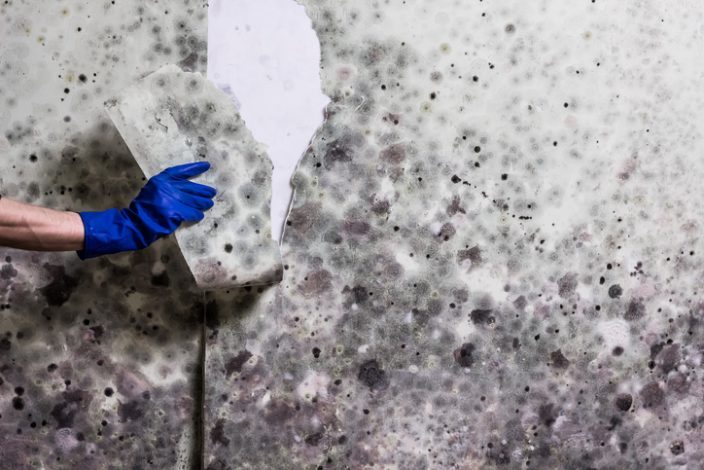Your Ultimate Overview to Post Mold And Mildew Remediation Strategies
In the after-effects of mold problem, recognizing how to efficiently remove the mold and mildew and avoid its reoccurrence is extremely important for maintaining a healthy interior setting. From picking the best cleaning and decontaminating approaches to applying techniques for lasting mold prevention, each step in the remediation journey plays a critical role in guaranteeing an effective result.
Understanding Post-Mold Removal Process
After finishing the mold remediation procedure, it is crucial to recognize the post-mold removal strategies that are essential to guarantee a efficient and thorough cleaning. When the mold and mildew has actually been gotten rid of, the next action includes cleansing and decontaminating the influenced areas to avoid any kind of regrowth of mold. This consists of utilizing specialized cleaning agents to clean down surfaces and kill any type of staying mold and mildew spores. It is essential to dry the area totally to discourage the development of mold in the future (Post Remediation verification). Correct air flow and dehumidification can aid in this process.
Additionally, conducting a final assessment post-remediation is important to make sure that all mold and mildew has actually been effectively gotten rid of. This examination should entail an extensive visual check in addition to potentially air tasting to validate the lack of mold spores airborne. If the assessment exposes any remaining mold and mildew, added remediation may be necessary. Last but not least, enlightening occupants on safety nets such as controlling wetness levels and promptly addressing any kind of water leakages can help keep a mold-free setting.
Efficient Cleansing and Sanitizing Methods

Protecting Against Future Mold Development

Importance of Appropriate Ventilation
Proper air flow plays an important role in protecting against moisture accumulation, a crucial consider mold growth within interior settings. Effective ventilation systems help get rid of excess humidity from the air, reducing the possibilities of mold spores finding the moisture they need to germinate and spread out. Without sufficient ventilation, interior spaces can become a reproduction ground for mold, resulting in prospective wellness dangers and architectural damage.
By ensuring appropriate air circulation, air flow systems can additionally assist in drying moist areas quicker after water damage or flooding occurrences, further hindering mold development. what to do after mold remediation. In rooms like restrooms, cooking areas, attics, and cellars where wetness levels tend to be higher, installing and preserving reliable air flow systems is important in stopping mold and mildew infestations

Surveillance and Maintenance Tips
Provided the vital duty that correct ventilation plays in avoiding mold and mildew growth, it is crucial to establish efficient tracking and upkeep suggestions to make certain the continued functionality of air flow systems. Normal examinations of air flow systems must be performed to check for any indicators of obstructions, leaks, or malfunctions that can hinder proper air flow. Surveillance moisture levels within the property is also essential, as high humidity can add to mold and mildew growth. Setting up a hygrometer can assist track Full Article humidity levels and alert property owners to any kind of spikes that may require focus. Furthermore, making sure that air filters are frequently cleaned up or changed is important for keeping the performance of the ventilation system. Implementing a timetable for regular maintenance jobs, such as duct cleansing and HVAC system assessments, can aid avoid concerns before they escalate. By staying alert and proactive to the condition of ventilation systems, homeowner can effectively mitigate the danger of mold regrowth and preserve a healthy interior environment.
Final Thought
In conclusion, post-mold removal strategies are important for ensuring a clean and safe atmosphere. Recognizing the procedure, carrying out effective cleansing and disinfecting approaches, stopping future useful source mold and mildew growth, keeping correct ventilation, and routine tracking are all crucial actions in the removal procedure. By following these standards, you can successfully get rid of mold and mildew and prevent its return, promoting a healthy and balanced living or functioning space for all owners.
In the consequences of mold infestation, understanding exactly how to efficiently remove the mold and prevent its reoccurrence is critical for preserving a healthy and balanced indoor environment. As soon as the mold and mildew has actually been gotten rid of, the next step involves cleaning and sanitizing the affected areas to prevent any regrowth of mold - Post Mold Remediation. After eliminating visible mold growth, it is essential to cleanse all surfaces in the affected area to eliminate any kind of remaining mold spores. To better enhance mold avoidance actions, it is essential to address underlying problems that originally led to mold development.Given the crucial duty that proper ventilation plays in protecting against mold and mildew growth, it is crucial to develop effective surveillance and maintenance suggestions to mold removal bleach guarantee the ongoing capability of air flow systems
Comments on “Testing Air Quality After Mold Remediation”